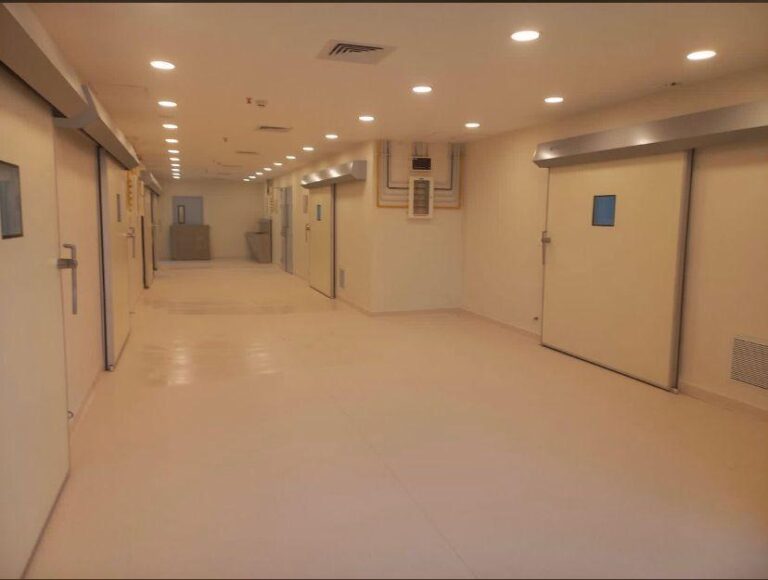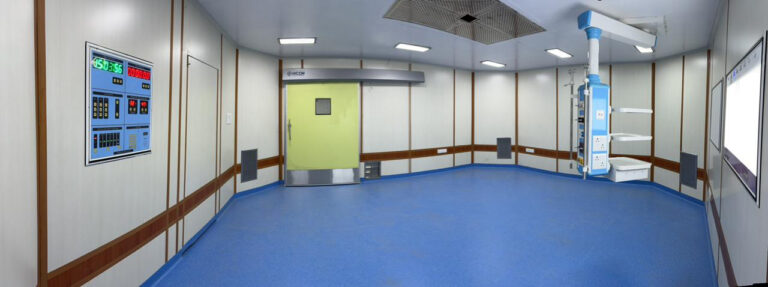In healthcare environments, every detail contributes to ensuring the safety, comfort, and efficiency of both patients and staff. One essential yet often overlooked feature in hospitals, clinics, and medical facilities is the door system. Medical sliding doors, designed specifically for healthcare environments, offer a range of benefits that traditional doors simply cannot match. In this blog, we’ll explore why medical sliding doors are a game-changer for healthcare settings and why you should consider installing them in your facility.
1. Space Efficiency
One of the primary benefits of medical sliding doors is their ability to save space. In a busy hospital or clinic, space is often at a premium. Traditional hinged doors require ample space to swing open, which can create obstructions, especially in hallways or smaller rooms. Sliding doors, on the other hand, glide smoothly along a track and don’t need the extra clearance. This makes them ideal for tight spaces, allowing rooms and corridors to be used more efficiently. This space-saving feature is particularly important in emergency rooms, operating theaters, and patient rooms where every inch of space matters.
2. Enhanced Infection Control
In healthcare settings, infection control is a top priority. Medical sliding doors help reduce the spread of germs and bacteria, which can be transferred when manually touching door handles. Since these doors can be automated and operated without physical contact, they contribute to maintaining a cleaner and more hygienic environment. Automated medical sliding doors often have sensors that open the doors when someone approaches, further minimizing touchpoints and the risk of cross-contamination. This is especially crucial in high-traffic areas such as emergency departments, waiting rooms, and intensive care units.
3. Improved Patient and Staff Safety
The safety of both patients and healthcare staff is paramount in any medical facility. Medical sliding doors are designed with safety in mind. These doors typically have features such as slow, smooth operation, which reduces the risk of injury from abrupt door movements. They are also less likely to obstruct passageways or cause accidents in busy, fast-paced environments. Furthermore, sliding doors can be equipped with sensors that detect obstacles, ensuring the door doesn’t close on individuals or equipment. This feature is especially important in settings where patients may be on stretchers or in wheelchairs, ensuring their smooth and safe passage through the door.
4. Noise Reduction
Hospitals and medical facilities are often noisy places, and this can contribute to stress and discomfort for patients. Medical sliding doors are designed to operate quietly, helping to reduce the overall noise levels in a medical environment. Traditional doors can create loud sounds when they slam shut or swing open, but sliding doors glide effortlessly and quietly, creating a calm and peaceful environment. This noise reduction is particularly important in recovery areas, patient rooms, and intensive care units where a quiet environment is essential for rest and healing.
5. Aesthetic Appeal
The visual appeal of medical sliding doors should not be underestimated. Modern medical sliding doors can be designed with sleek, contemporary aesthetics that blend seamlessly into any healthcare environment. These doors are available in a variety of materials, finishes, and colors, allowing for customization that complements the overall design of the facility. Whether you’re outfitting a hospital, clinic, or specialty care center, the clean and modern look of sliding doors can elevate the ambiance of your space. Additionally, transparent glass options provide patients and staff with a clear view of the room or hallway, further enhancing visibility and transparency.
6. Accessibility and Convenience
Accessibility is a critical consideration in healthcare environments, and medical sliding doors make it easier for people of all abilities to move through the space. Sliding doors are ideal for individuals with mobility challenges, such as those in wheelchairs or with walkers, as they require minimal effort to open and close. Automated sliding doors, in particular, ensure that everyone can access rooms and hallways effortlessly, without the need to exert physical force. This convenience is a significant advantage, especially in hospitals and clinics that cater to patients with varying levels of mobility.
7. Compliance with Regulations
Medical facilities must adhere to strict regulations regarding safety, hygiene, and accessibility. Medical sliding doors are designed to meet these requirements, ensuring compliance with health and safety standards, including those set by the Americans with Disabilities Act (ADA) and other regulatory bodies. Sliding doors can be equipped with automatic features that make them accessible to individuals with disabilities while maintaining high standards of hygiene and safety. This compliance reduces the risk of legal issues and ensures that your facility is operating in line with industry standards.
Conclusion
Medical sliding doors are a vital component of any modern healthcare environment. Their ability to enhance space efficiency, improve infection control, increase safety, reduce noise, and offer aesthetic appeal makes them an ideal choice for hospitals, clinics, and other medical facilities. By choosing medical sliding doors, healthcare providers can ensure a more streamlined, comfortable, and safe environment for both patients and staff. Whether you are outfitting a new facility or renovating an existing one, installing medical sliding doors is a smart investment that will improve the overall functionality and experience of your healthcare environment.


